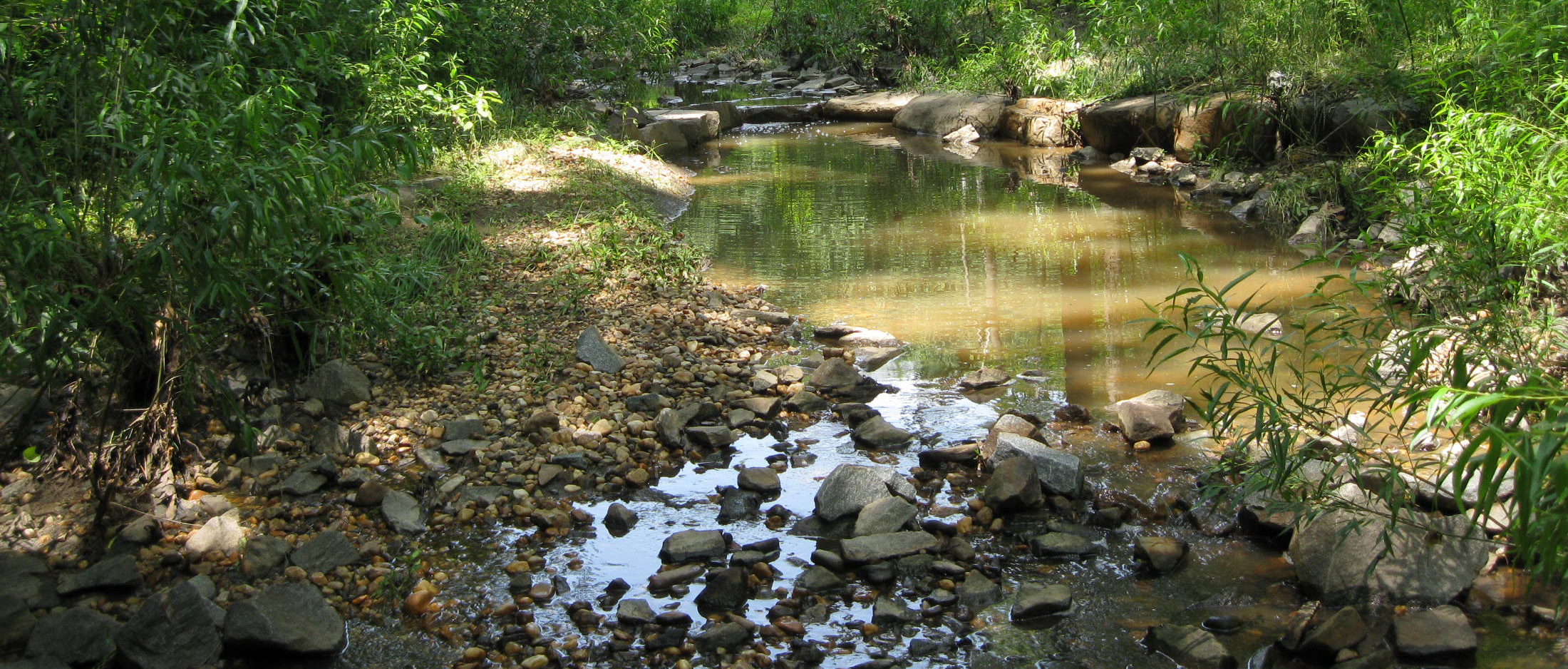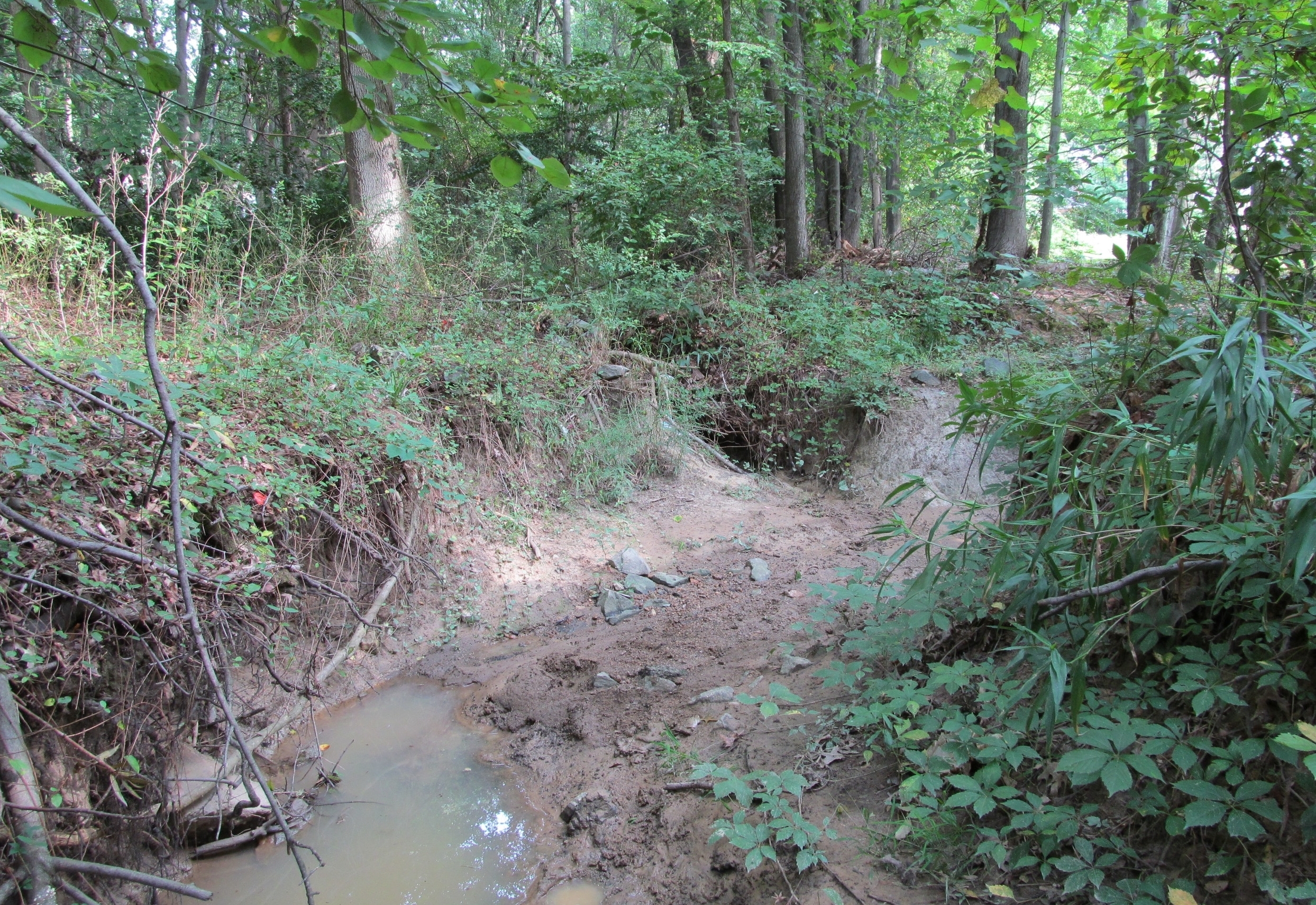WSSI has restored more than 73 miles of stream channels in the Mid-Atlantic, returning stability to badly degraded riparian ecosystems that have been impacted by changes within the watershed. WSSI provides exceptional stream restoration design and implementation, drawing on our experience, technology, and training. We lead the field in the extent and depth of our staff training in stream restoration and fluvial geomorphology, and we cross-train our staff to provide technical competency in every phase, from data collection to design and from construction to monitoring.
Why let a beautiful, restored stream go unexplored? See how WSSI & local organizations encourage adventure with the annual Reston Kids' Trout Fishing Day! Reston's streams - once eyesores with eroding banks and toppling trees - have been restored and are now a community retreat for fun and good ole fashioned family bonding.
Our stream restoration consulting philosophy is based on the concept of Natural Channel Design, which seeks to restore a degraded stream by mimicking the characteristics of a "stable" natural system. WSSI’s stream restoration projects result in stable, self-sustaining, and aesthetically pleasing riparian corridors that can also earn pollutant removal credit in support of MS4 and/or TMDL regulatory requirements.
To help facilitate our stream restoration design, WSSI has developed a proprietary software system known as StreamNCD™. The system runs in the AutoDesk Civil 3D environment and allows efficient design and manipulation of a 3D stream corridor. This enables WSSI’s engineers the flexibility to easily optimize restoration designs through an iterative process to meet site-specific demands – a process that conventional design tools and methodologies limit through time and budget constraints.
Compensation for stream impacts can be provided through various means, from the purchase of mitigation bank credits to site-specific stream restoration projects. WSSI can work with you to determine the most cost effective and practical solution for your project; contact us by clicking here.
Pohick Creek Tributary Restoration - Fairfax County, VA
Before:
This eroded stream channel in a neighborhood's narrow riparian corridor had exposed utility lines, a deteriorating bridge, and significant tree instability along the banks.
After:
WSSI used cross vanes, step pools, and reinforced bed material to restore the stream. The restored channel - shown one year after construction - offers the community a park-like amenity while protecting existing infrastructure and reducing maintenance expenditures for tree care. This new bridge improves access to the area and encourages use of the existing walking trail.
Reach 12 of Snakeden Branch - Reston, VA
Before:
Exposed utility lines, damaged adjacent walking trails, and unsupported tree roots - and subsequent loss of otherwise healthy trees - were all caused by erosion along this urban stream's bed and banks.
After:
WSSI raised the stream bed to reconnect it to the floodplain, and placed rock structures to direct flow away from channel banks and create the riffles and pools necessary for this stream's ecological and physical integrity.
Arlington National Cemetery Millennium Project - Arlington, VA
Before:
Incised, badly degraded channel running through the proposed cemetery expansion project.
After:
Channel bed was raised to reconnect to the floodplain using a reinforced bed material that included natural boulders and cobbles. The stream serves as a centerpiece of the Millennium Expansion, making aesthetics a very important component of the restoration.
Aerospace Corporation - Westfields Parcel 35 - Fairfax County, VA
Before:
This 800 ft section of an unnamed tributary to Flatlick Branch exhibited significant incision and was completely disconnected from the floodplain. As a result, “adequate outfall” was not achieved, threatening approval of this important project.
After:
WSSI restored the channel by raising the stream invert, stabilizing with a reinforced bed material, providing grade control with rock structures, and planting with a heavy density of native trees, shrubs, and herbaceous materials. The ecological condition of the channel was significantly improved while providing an adequate channel to convey and treat runoff from the project.











